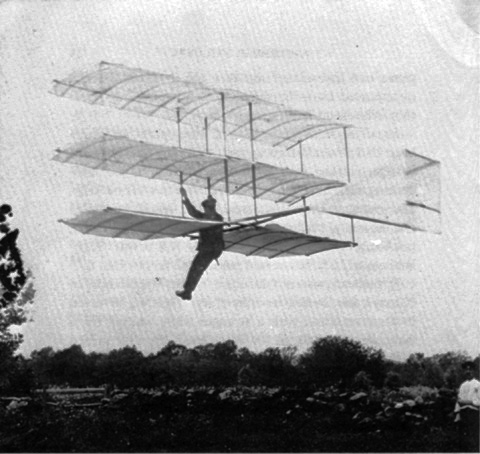Notice the use of wheels, a cockpit with controls, wings, rudder, fuselage and much more. The following are listed as GW's main accomplishments and firsts (GW = Whitehead):
WHITEHEAD’S MAIN ACCOMPLISHMENTS
“First-in-Flight”: first manned, powered and controlled flight in a “heavier-than-air craft” in the world, with his August 14, 1901 No. 21 “Condor” aeroplane [iv]
Developed first successful flying boat, the precursor to hydroaeroplane and hydroplane
World record for speed, duration, and altitude (1901-1902)
Development of forms of wing warping, use of a rudder, and three-axis control before the Wright patent was taken out
Developed and flew first successful aerocar
Developed and flew first successful aeroplane that used wheels
Developed and flew first successful aeroplane that used opposing propellers in front (later referred to as tractors)
Developed gyroscope to stabilize precursor to autopilot mechanism
Developed one of the earliest helicopters
Provided a vision and example to others that flight was possible
Developed multiple aircraft, with early successful design that demonstrated flight possible
Designed and built at least 200 lightweight engines, some of which powered aircraft that flew successfully
Sharing his findings with contemporary inventors in person, during press conferences, in trade journals through letters, and in press interviews
...
THE “FIRSTS”
Whitehead accomplishments that may be considered ” firsts*”:
First known manned, powered and controlled flight in a “heavier-than-air craft”, worldwide in an aircraft he designed and built
First to fly in a complete circle
First successful “aeronaut”
First to fly at night with powered aircraft
First use of wing-warping in successfully flown aircraft
First to design and fly a roadable “aero-car-boat” aircraft
First powered successful seaplane
First rubber-tired wheels used on successful airplane
First to design and build first lightweight engine for successful powered flight
First to master launching plane using speed of wheels and lift of propellers
First to design and build first powerful, lightweight gasoline engines for powered flight (1, 2, 3, 4, 6, & 8 cylinder engines)
First to sell powerful, lightweight gasoline engines for powered flight to others
First air-cooled engine in powered flight
First airplane propelled on ground by engine
First airplane with folding wings
First use of aluminum propellers
First to design individually controllable propellers
First to design two-place aircraft
First to experiment with aircraft in Pennsylvania and Connecticut
First to publicly advertise multiple passenger aircraft
First to build a concrete runway for aircraft in USA
First to design and use a concrete-laying machine in Connecticut
*Biographer and researcher Stella Randolph notes that most of these firsts were accomplished prior to December 17, 1903, in her book “Before the Wrights Flew”.
Gustave Whitehead first to fly, inventor of the powered airplane, shared his discoveries immediately with the world, paving the way for all others working on the development of a practical airplane.
http://gustavewhitehead.info/gustave-whitehead-first-to-fly/

